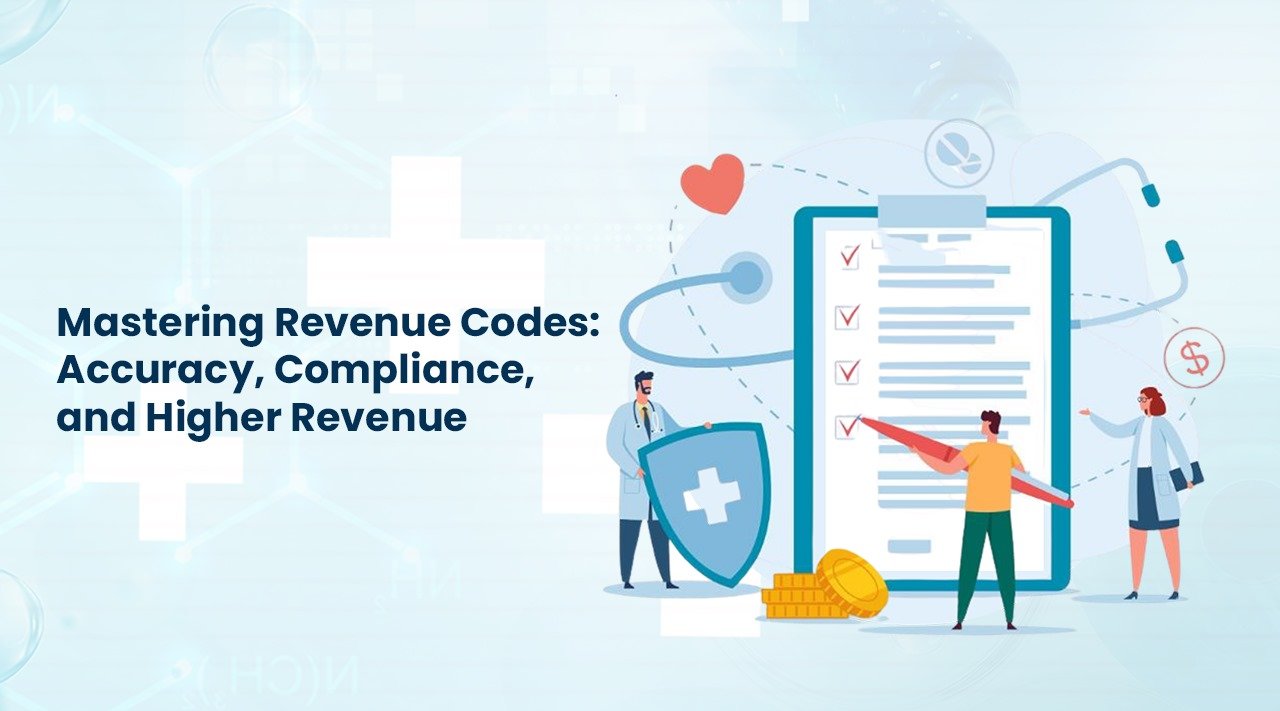Medical billing might sound confusing and complex, especially when handling various codes, particularly when driving reimbursements. Revenue codes are one of the most critical components of this system. These codes are numeric identifiers that play a significant role in medical billing. They help insurance companies and hospitals understand why and where the services were provided.
Here, we will explain revenue codes, their significance, and why you should use them in medical billing.
What are Revenue Codes in Medical Billing
In medical billing, Revenue codes are three-digit numbers used to specify a location or department within a hospital or healthcare facility where services are rendered. These codes are submitted on the Uniform Billing Claim Form (UB-04). They are mainly used by skilled nursing facilities, hospitals, and other institutional providers.
These codes correspond to a specific service area, such as a laboratory, radiology department, operating room, pharmacy, etc. The payers use these codes to determine the service or procedure context, which affects claim approvals and reimbursements.
Significance of Revenue Codes in Healthcare Billing
These specific codes serve important medical billing purposes besides being numerical identifiers. Let’s break them down.
- Clarifying Service Location
Revenue codes help identify the location where a particular service is provided. They also help insurance companies minimize the likelihood of disputes and process claims more accurately.
- Supporting Medical Necessity
Revenue codes, along with procedure codes and diagnosis codes, help justify the service’s necessity and appropriateness.
- Enabling Accurate Reimbursement
Insurance providers mainly utilize revenue codes to finalize the reimbursement levels. Mismatched or incorrect codes can result in underpayment or claim denials.
- Ensuring Compliance
Using accurate code ensures compliance with government regulations and payer policies. It also reduces the risk of penalties and audits.
Also Read: The Ultimate Guide to Efficient Revenue Cycle Management
How Revenue Codes Work With CPT/HCPCS and ICD-10 Codes
Revenue codes and other medical codes go hand-in-hand in the billing process. A revenue code indicates where the service will occur (i.e., radiology, emergency room). However, CPT/HCPCS codes describe the service done (i.e., chest x-ray).
Similarly, an ICD-10 code elaborates why the service is needed (i.e., fever, breathing problem). Below is an example;
Here’s an example:
| Code Type | Example Code | Description |
|---|---|---|
| Revenue Code | 0450 | Emergency Room (General) |
| CPT Code | 71045 | Chest X-ray |
| ICD-10 Code | R06.02 | Shortness of breath |
Commonly Used Codes List in Hospitals
Some of the commonly used revenue codes are;
| Revenue Code | Department/Service |
|---|---|
| 0450 | Emergency Room |
| 0250 | Pharmacy |
| 0300 | Laboratory |
| 0360 | Operating Room |
| 0420 | Physical Therapy |
| 0430 | Occupational Therapy |
| 0470 | Audiology Services |
| 0480 | Cardiology |
| 0720 | Urology |
| 0820 | Hemodialysis Outpatient |
Best Tips for Proper Use of Revenue Codes | Follow the Best Practices
- Stay updated about the coding changes. You can subscribe to CMS bulletins or industry updates.
- The revenue code should align with ICD-10 and CPT/HCPCS codes. Mismatches can result in denials.
- Conduct internal audits before the claims are submitted to identify errors. This will help you save money and time and reduce compliance risks.
- Invest in training your staff on revenue codes and their importance. It will significantly improve your billing accuracy & revenue cycle efficiency.
How Revenue Codes Help in the Insurance Claiming Process
Insurance companies rely on these codes to determine the covered service, the reimbursement amount, and whether the facility is authorized to provide the service. Moreover, an incorrect revenue code can result in reduced payments and claim rejections. So, accurate coding directly impacts healthcare providers’ cash flow and revenue cycle.
Also Read: The Ultimate Guide to Efficient Revenue Cycle Management
Our Two Cents
Being a healthcare provider, you cannot deny the importance of revenue codes in medical billing. They are mandatory for claim submissions, quick reimbursements, and regulatory compliance. The revenue codes help in aligning the service place with procedures and diagnoses.
With billing systems’ increased complexity, mastering the revenue code’s fundamentals became mandatory for smooth and efficient billing. These fundamentals benefit patients and healthcare providers equally.

